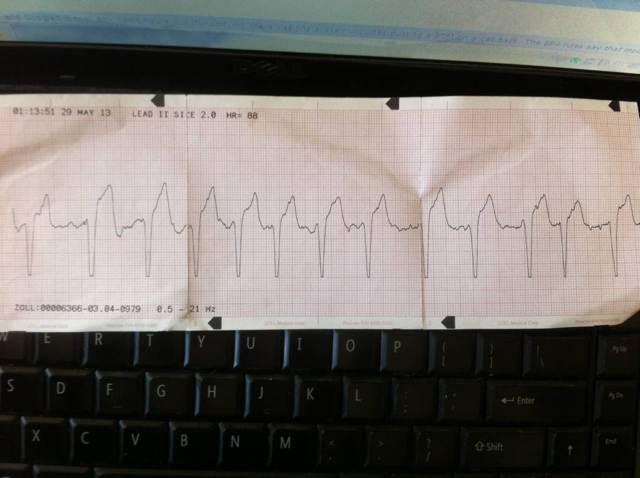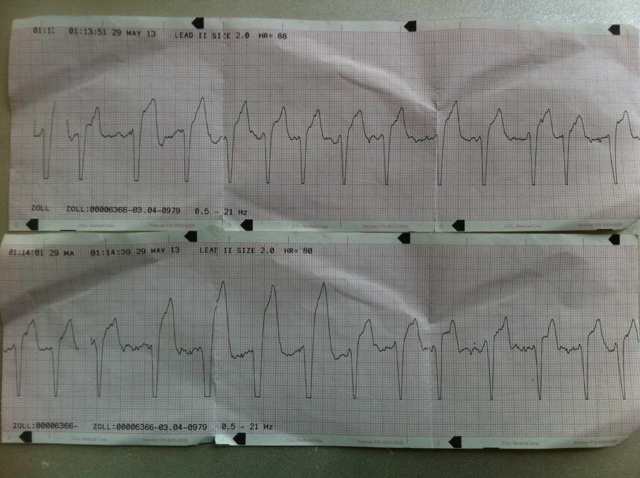Why is the pacer irregular? Are pacers not pretty typically set on a rate? Just at a rough glance, the R-R seems to be floating inconsistently between 75-100.
This is a common misconception. It is totally dependent on the pacemaker programing. Most pacemakers are programed for demand pacing not fixed rate.
If the pacer is set at a fixed rate then you will have a 100% paced rhythm at the programmed rate with a regular R-R interval; Given that the patient's intrinsic rhythm, if any, is lower than the programed rate and there are no ectopic beats. These patients usually have a 3rd degree block or Junctional/Ventricular escapes. The problem with this type of pacing is that it does not account for activity or physiological changes.
Demand pacing usually preferred in most situations. With demand pacing the pacemaker can sense intrinsic activity from the heart either inhibit the pacemaker activity or trigger. This allows the pacemaker to only pace when necessary and can account for physiological changes. For example if the pacemaker is set at a demand rate of 60 but the patient's intrinsic rhythm is Sinus in the 80s then the pacemaker will not fire.
Talking about heart rates with pacemakers is a little misleading since they are actually sensing various intervals and not overall heart rate.
An example:
Lets say the patient has a pacemaker set on DDD. The demand rate is 60, or an R-R of 1000msec, and a PR delay of 200msec. The patient's intrinsic rhythm is SR in the 70s with a 1st degree AVB with a PRI of 280msec. The pacemaker will sense the patients intrinsic P wave and start counting, if there is no ventricular activity after 200msec it will generate a ventricular pace. So in this case since the patients intrinsic PRI is outside the set ranges there will be a normal P wave with a Ventricular paced QRS. If the heart rate increases to 100 then so will the V paced response. At the same time the pacemaker is counting R-R intervals. So once the pacemaker senses a R wave it starts counting, if an intrinsic QRS happens before the set interval passes then the pacing will be inhibited, if not it will pace.
*This is all very simplified explanation.
In the OP's picture you can see what appear to be P waves. If there are irregular P waves and the pacemaker is being triggered off them then you will have a resulting irregular paced rhythm.
Here is a chart showing the standard pacemaker code. Your patients "should" have a card in their wallet saying what brand and the settings. The first 3 letters are important.
\




